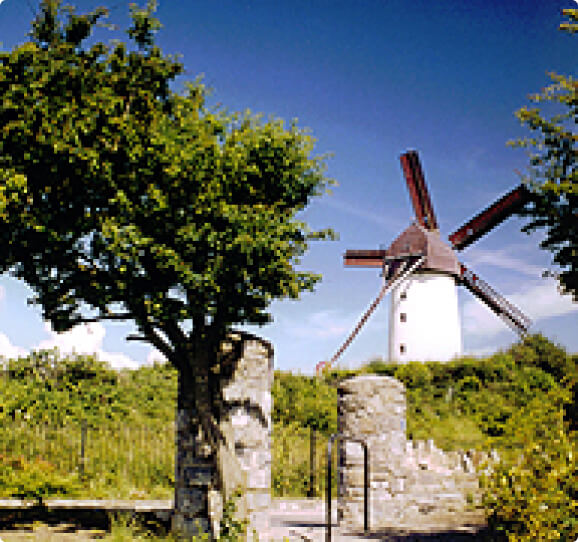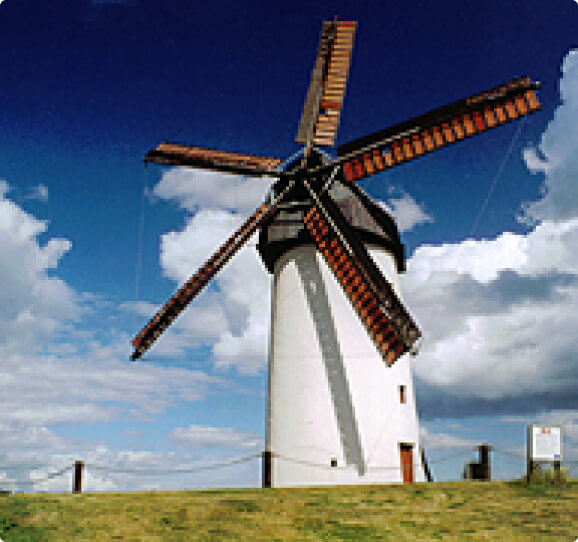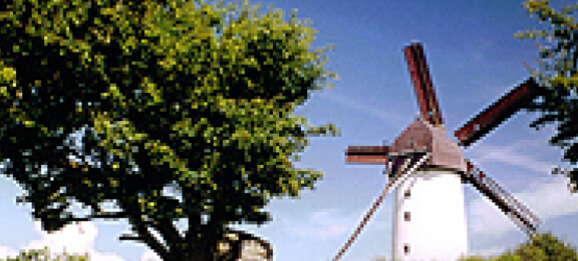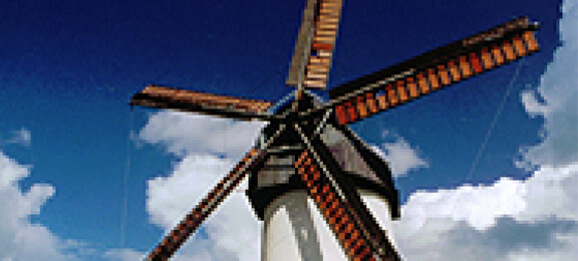Skerries Mills
In Skerries, there are two windmills and a watermill – a unique collection of mills and one of Ireland’s foremost industrial heritage centres. The story of stone-ground milling in Skerries can be traced to the early 16th century when the lands belonged to the Priory of Holmpatrick, an Augustinian monastic foundation. Milling continued in Skerries until the early years of the 20th century and a bakery which existed by 1840, was producing breads and confectionery until the mid 1980’s.
Following a ten year restoration project undertaken by the County Council, F.Á.S. and the local community, the centre is open to the public throughout the year. The mills with associated mill pond, mill races and wet lands are now a focal point for Skerries Town Park and the site commands wonderful views of the coast and off-shore islands. Visitors begin their guided tour of the site in the four-storey watermill building; they can try their skills at grinding; observe the waterwheel at work and walk through the corn field to visit one of the windmills. The watermill also houses a café, craft shop and exhibition space which can be accessed independently.
The mills in Skerries were used for grinding corn: wheat, oats and barley – wind power complementing water power, particularly in times of drought. At the dissolution of the monasteries under Henry VIII in 1538, the Canons Regular of St Augustin of Holmpatrick owned c.1000 acres of land in the vicinity of present-day Skerries and counted a watermill among their possessions. A lease of 1578 tells us that one windmill had already been built on Chanon or Shallock Hill by the last quarter of the 16th century. The second windmill, known as The Great Windmill of Skerries was probably built towards the end of the 18th century when the former had fallen into disrepair. Stormy weather in the mid- 1840’s badly damaged this mill but it was rebuilt in a five-sail version and became a popular symbol in holiday posters for Skerries. Artists Alexander Williams and Harry Kernoff also made it a subject of their paintings.
There are three sets of grinding stones in the Skerries watermill, powered by an overshot waterwheel. A large mill-pond controlled by a series of sluice-gates feeds the water to the mill. The four floors or lofts are served by two bag-hoists; winnowers and a blower are located above the stone floor and below the hoppers in the top loft. The Skerries windmills are both tower-mills, where the cap or top of the mill is turned to the wind. The older of the two mills rises to 12.2 metres and is perched on the site of a prehistoric fort, the highest point in the town. The cap is thatched and turned into the wind from inside by a hand lever. The Great Windmill of Skerries commands magnificent views of the coast and surrounding countryside. 15 metres in height with a 20 metre diametre of sail, this mill contains two sets of grinding stones and the cap is pulled into the wind by a tail-pole. The mills enclose a four-acre mill field where the annual crop is grown.





